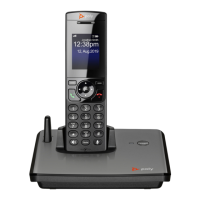32
Call Routing
Call routing is the process by which the device sets up a call bridge or an endpoint call based on information
like the trunk on which the call originates, the caller’s number, and the called number.
From the device’s perspective, calls originated from the trunk side are considered inbound calls, while calls
originated from an endpoint are outbound calls. The call routing rule syntaxes for inbound calls and
outbound calls are slightly different.
Call routing rules are parameters used to instruct the device how to route calls. A call can transform into a
call bridge or an endpoint call after being routed by the device according to the given routing rules. Call
routing rule configuration relies heavily on digit maps. If you are not familiar with how digit maps work, please
read the Digit Map Configuration
section in this guide.
Inbound Call Route Configuration
Every trunk has a corresponding InboundCallRoute parameter in the device configuration. It is a
comma-separated list of rules where each rule is also surrounded by a pair of curly braces {}. No extra
white spaces are allowed. These rules tell the device how to handle an inbound call, such as sending it to
the handset (and ringing the attached phone(s)).
The general format is:
InboundCallRoute:= rule OR {rule},{rule},….
Note that the curly braces can be omitted if there is only one rule in the route. The OR operator isn’t part of
the parameter syntax. It is used here to separate alternative values only.
A rule has the following format:
rule := peering-list : terminal-list
The following table shows the rule formats.
Rule Formats
Rule Format Notes
peering-list : peering,peering,… Comma-separated list of 0 or more peering
objects.
terminal-list : terminal,terminal,…. Comma-separated list of 0 or more
terminal objects.
peering : caller-list > callee-list
caller-list : caller|caller|caller|… Vertical bar-separated list of 0 or more
caller objects.

